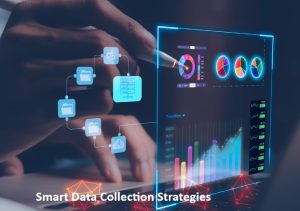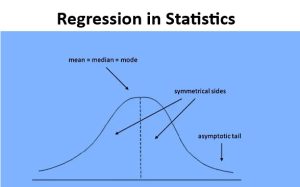Having a B2B Marketing Strategy means you can learn from your mistakes and turn them into marketing successes. What are you waiting for?
In the past, B2B marketing consisted of cold calling and face-to-face sales. Today, B2B marketing strategies are much more sophisticated.
In 2020, the COVID-19 pandemic left many merchants to adjust and rethink their B2B strategies for the future.
So in 2023, B2B marketers will be looking for innovative strategies to engage their audience.
A company that wants to stay ahead will need both innovation and agility on an ongoing basis.
With so much information due to technology like Artificial Intelligence (AI) or machine learning, decisions must happen faster than ever before, while still being accurate enough that initial success rates don’t decline over time due to bad decisions.
There are many different marketing strategies these days that can be beneficial to your business, but the economic instability due to the pandemic is making it difficult to decide which one to select.
To stay competitive in the business world, it’s essential to stay up-to-date on new trends.
The essence of marketing is understanding customer needs . Whether via market intelligence, surveys, visits to customers or feedback from external personnel, it is necessary to collect all the important information from these customers in order to be able to develop offers that are most suitable for these needs.
Another marketing objective is that these offers have to be made sustainably and profitably for the company and they have to be better than the competition .
And once these offers have been executed, they need to be communicated to the customer efficiently, according to the profile, stakeholders, etc.
Let’s start with an understanding of B2B.
What is B2B Marketing?
B2B or business-to-business marketing is a type of marketing where businesses are the target market.
These companies sell their products or services primarily to other companies for profit and not to individual consumers.
B2B companies buy goods and services from each other, which means they are always looking for new opportunities to grow their business and build better relationships with suppliers, vendors, counterparties and customers.
These B2B relationships currently account for approximately 90% of all global trade transactions, according to research by the International Data Corporation (IDC) , featured in the World Trade Organization article.
the importance of B2B digital marketing strategies is not only in the effectiveness of your strategy but also in the customer experience. A good way to start is to understand who your target audience is and what motivates them.
Once you have this information, it will be easier to create content that resonates with them and motivates them to take action. A well-planned and executed digital marketing strategy can help your business reach new customers, increase sales and expand your brand in an increasingly competitive market.
In today’s article, understand a little better about the best marketing trends for B2B companies and how these strategies can help your company reach the right audience and further expand its operations in the commercial market.
Best marketing trends for B2B companies
Marketing trends for B2B companies are changing with the times. There is a shift away from traditional marketing towards more innovative and disruptive trends.
The internet has become such a powerful tool that it can change the way business is done . With the help of digital marketing, businesses can reach their target audience at a much lower cost than ever before.
Predictive analytics is now an integral part of marketing strategy . They help marketers create more personalized content and engage with their audience in a more meaningful way.
Data-driven marketing is also a trend that has gained popularity in recent years. It helps marketers make decisions based on data rather than instinct, which leads to better results for their business.
It is worth highlighting that with AI assistants, B2B companies can take advantage of these changes, offering a more personalized customer experience.
This allows them to provide better services to their customers and improve their business. That’s why many B2B companies are now looking to adopt AI assistants in their companies.
Following are some more of the best marketing trends for B2B companies:
-
Content Marketing: It is the process of creating and distributing valuable content to an audience. It’s a powerful tool that can help you reach your target audience, increase brand awareness and improve conversion rates.
-
Marketing Automation: It helps to automate your marketing campaigns with data analysis and targeting.
-
Data Science: Helps you optimize your business using data analytics to understand customer behavior, customer journey mapping, predictive analytics, and cognitive computing.
Why is digital marketing a strategic part of every business?
Digital marketing is a strategic part of every business and is not just limited to the digital world. It is important for any business to have a digital marketing strategy to be competitive and stand out from the crowd.
It has changed the way companies communicate with their customers. The use of social media, blogs, apps, email marketing, and digital advertising have helped businesses connect with customers on a personal level.
Therefore, digital marketing has become an essential tool for companies, as it helps them market their products or services more effectively, making use of various tools such as email, social media and websites. With these tools, companies can reach their target audience without spending a lot of money on traditional advertising methods.
It’s important to understand the pros and cons of each type of tool and strategy so you can figure out which strategy will work best for you.
There are many different types of digital marketing strategies that businesses use to reach their target audience. Some strategies include search engine optimization (SEO), paid social media advertising, influencer marketing, content marketing, and email marketing.
How to Execute a Competitive Online Content Strategy Effectively
Online content strategy is a new term that many companies are adopting to improve their presence in the digital environment. It’s a process that helps businesses create and maintain an effective content marketing strategy.
The main objective of an online content strategy is to increase brand awareness and sales by creating and distributing relevant, engaging and valuable content across the web.
To execute an effective online content strategy, marketers need to be strategic in their approach and stay ahead of the competition. A successful online content strategy can be executed through four main steps:
-
Define your target audience;
-
Create a compelling value proposition for your target audience;
-
Create a distribution plan for your valuable content;
-
Measure the impact of your efforts.
Yet when it comes to content marketing, there is no one-size-fits-all approach. The best way to start is to take a look at your competitors’ strategies and determine which ones are effective for your business.
The strategic approach has been shown to be more effective in achieving business goals, while the tactical approaches are more effective in short-term results.
Differences between B2C and B2B
B2C ( Business to Consumer ) marketing is aimed at the final consumer. The main feature that differentiates B2B and B2C is the nature of the purchase . As a final consumer, consumption is personal. In B2B it is consumed for transformation, for assembly, on the production line, for resale or even for services to improve its internal and administrative processes
The second important feature is the transactions themselves . In B2C transactions are low risk. In B2B, however, they are transactions that move very large volumes/values, are complex and high risk.
Because of this, another characteristic, the purchase decision , in B2B has to be totally professional, where its Personnel and Supplies, for example, are highly trained, because the objective is always to reduce costs, that is, to increase profit and bring value for the company. In B2C, the purchase decision can be emotional , to meet a basic need or an emotional impulse at that moment.
The last property is demand . that of B2C is a direct demand (for example, I sell a car to this person). In B2B, demand is derived where it already exists and is derived from an expected sale of some other B2B and/or B2C product.
Customer loyalty

For Flaviane Paiva, communication manager at LG Lugar de Gente, a company specializing in technology solutions for HR management, the strategies are designed in the long term and focused mainly on the relationship and customer experience. “We understand that the main points continue to be the quality of care, products, and services provided. Looking at it from the point of view of communication, we can say that we deal with large and personalized deliveries, and Customer loyalty comes with solidity and constancy in actions, ”she explains.
For this, the company invests in relationship marketing and gets involved with the customer’s real success. “We work with content campaigns, providing valuable information to our audience; we launch new products and update solutions so they don’t stop innovating; we take our brand through large events, in person and digitally; we share success stories and we seek to encourage companies to inspire other companies and, thus, we can help in the continuous development of all of them”.
When the company retains its customers, it gains notoriety to win over others. One action is related to another and both are important.
Success in B2B marketing strategies
“Our driving force is: the customer’s success is our success”, emphasizes Flaviane Paiva, adding that everything revolves around their needs and, from there, it is possible to express the value that the innovative systems offered by the company can represent for customers.
Another important factor: B2B marketing is not shortsighted. In this sense, it is fundamental to consider consistency in strategies, to strengthen an identity that generates trust and that enables the sustainable generation of results from company to company.
Still, it is necessary to give voice to the consumer to be clear if the company is on the right path in relation to its strategies. It’s important to understand your needs through consultative contacts, even more so when you’re dealing with your own customers. “At LG, we have periodic meetings held by the ‘Customer Success’ team, which help to analyze what is going well and what needs to be adjusted”, exemplifies Flaviane.
Five Essential B2B Marketing Strategies
For industry specialists, there are basically five essential points that cannot be neglected by marketing professionals, as they bring quality to actions and analysis of market strategies. Are they:
#1 – Value chain
According to Michael Porter , it is the interconnected set of all activities that create value , from a basic source of raw materials, through component suppliers, to the delivery of the final product into the hands of the consumer.
#2 – Segmentation
It is the grouping of participants with similar habits, needs and interests . But why segment? To increase the possibility of success and efficiency of marketing activities. In B2B, it is customary to segment by the industry that uses the product, that is, by the value chain. In addition, by efficiently sub-segmenting, you increase the possibility of marketing activities and you will be able to understand and create a value proposition that is more suited to those consumption habits, the customer’s needs and their interests.
#3 – Competitor Analysis
When it comes to assessing competition, we usually think of placing all competitors in a common market and assessing the competitive advantages and disadvantages of these competitors compared to the company in which the marketing professional works.
Where do we see a huge opportunity for improvement in B2B ? When you manage to sub-segment companies by consumption habits and specific needs, and, for each sub-segment, manage to define who the most important competitors really are . Because for a market that has a need for high added value products, not all competitors are going to come into force. Some do not enter and are not considered by customers. There are two main points to evaluate the competition: to analyze the competition by segmentation and to evaluate in the long term to be able to see, many times, a “gap” to be taken advantage of today.
#4 – SWOT Analysis
The SWOT analysis is a four quadrant matrix that relates the strengths and weaknesses of the company versus the external environment (segment, market, company and/or customer) or even by an individual customer. Its name comes from English, and basically means: Strenghts (Strengths), Weaknesses (Weaknesses), Opportunities (Opportunities) and Threats (Threats). In Portuguese, this acronym is known as FOFA.
When you talk about Strengths, you think: what are the reasons (competitive characteristics) the customer would buy from you? (critical success factors); as for Weaknesses , they are the aspects of your product or services that make it difficult to generate business in the segment; Opportunities are the spaces/gaps in the segment/market that can be used with your product or service; and Threats are movements in the segment/market that make it difficult to generate business. This matrix that will show where the company is: in advantage or disadvantage of those competitors mentioned in tip #3. So we have a tool being used in a more assertive way.
#5 – Stakeholder analysis
This type of analysis identifies and evaluates the roles of all participants in a purchasing process within a company. Of great relevance, this analysis is unique to B2B businesses. Because it is necessary to evaluate within an organization how a product or service is purchased/used, that is, how the need for this product is generated until the moment it is purchased and who are the participants within this process. In order to have a more effective stakeholder analysis, the first thing to do is to draw the purchase decision flowwithin that customer (identifying the area where the need originates, who really are the people within that area that are important, who are the people who approve, if there is a quality department, and who approves the purchase order, for example). Understanding how this flow works, the analysis will facilitate the decision on the approach policy per customer (when you are going to visit the customer, with whom you are going to visit this customer, who is going to visit this customer and what is the purpose of this visit).
The second step in this type of analysis is to define the continuous improvement process : identifying the stakeholders, raising the needs, carrying out the stakeholder role analysis, managing expectations, making the offer to the “target” participant, and reviewing, analyzing and correcting possible mistakes during the process, and then start the stakeholder analysis cycle again .
It is necessary to identify the people and then design the approach strategy based on the level of power that the stakeholders /participants have within the organization’s purchasing process. Well, sometimes you have a perfect offer , but the wrong approach was taken with the wrong person and the chance to close a deal is lost.






